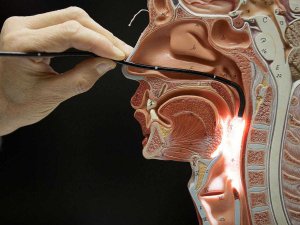NEWS
A camera is created that "sees" the internal organs through and without the help of an X-ray

Researchers from the University of Edinburgh have developed a prototype camera that can "see through" without the use of X-rays. The device will be used to monitor endoscopic examinations. The principle of the camera is based on the registration of "ballistic" photons.
Endoscopes are optical devices that are inserted into the patient's body through natural openings. So, for example, gastroscopy is arranged: examination of the stomach, duodenum and esophagus walls, in which a flexible endoscope is inserted through the mouth or nose. Such a survey reduces the likelihood of complications, since it does not require additional incisions on the patient's body.
Many examinations using an endoscope are carried out under X-ray control. It allows you to accurately determine the position of the device in the body. However, radiography has a number of drawbacks: from exposure to ionizing radiation to the cost of operating such an instrument during inspection.
A new development, according to scientists, will allow to abandon x-ray control. Modern endoscopes are equipped with a light source for additional illumination during non-invasive operations. Photons of this source are caught by the camera. The principle of operation of its photon detectors is based on fixing unscattered ("ballistic") photons. These particles move along trajectories close to rectilinear, and practically do not dissipate in comparison with most photons coming from the light source. "Ballistic" particles are much smaller than those scattered. Draw conclusions about where the endoscope is located, by comparing the time of recording "ballistic" and scattered photons.
The developers tested the prototype by placing light sources inside the plucked carcass of a chicken and a light sheep. The signal was recorded with a tissue thickness of about 20 cm.
© All rights reserved. Citing to www.ict.az is necessary upon using news




